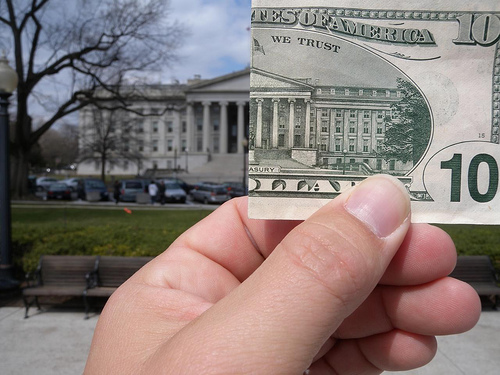Treasury ETFs

Photo by: Ryan McFarland
U.S. Treasuries surged in popularity during the recent crisis. In fact at one point people were so anxious to buy up treasuries that the short-term yield dropped to 0%. At this point Warren Buffet emailed his directors:
This should be bullish for Berkshire. With great foresight, I long ago entered the mattress business in a big way through our furniture operation. Now mattresses have become fully competitive as a place to put your money, and sales will soon take off.1
People were anxious to find a safe place to put their money, which is one of the strong suits of U.S. Treasuries.
Treasuries have a very different risk profile than many other investments. There is a very low risk of default compared to other types of bonds, but you are exposed to risks like inflation. ETFs can provide a way to introduce this risk profile into our portfolios more easily than actually buying the bonds. There are several ETFs which allow you to do this and many concepts that can be pivotal to understand before doing so.
Understanding Yields and Prices
Bond prices and yields can be a bit opaque to those without experience; however they are a fairly simple concept. When a bond is issued, it pays a certain amount and has a certain cost. Say for example I buy a $10,000 bond that will pay me $300 per year. Thus it yields 3%. Now many would think that since the bond will repay my $10,000 at the end of its life, it would be a risk-free investment. However suppose that interest rates go down at that 3% becomes more attractive, people will be willing to pay more for that same bond. As the price goes up, the $300 per year becomes a smaller fraction and the yield of the bond goes down. Meanwhile if interest rates go up, my bond becomes less attractive and the price will go down.
This is very important when considering inflation. Generally if inflation is high, you will see higher interest rates. As such in an inflationary environment, bond yields tend to increase, meaning the price of any bonds you own may very well go down. This means that the term of the bond becomes very important. While over a short period of time, inflation may be predictable; over long periods any number of things can happen to affect interest rates. Obviously because of this, longer dated bonds tend to pay higher yields.
Treasury ETFs
There are many treasury ETFs and will likely be many more in the future. Some of the more popular ones include:
TLT – Long Term Treasuries (more…)
















